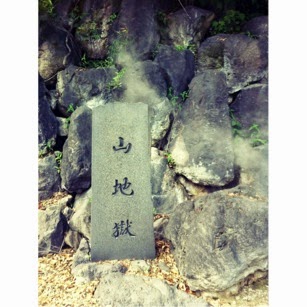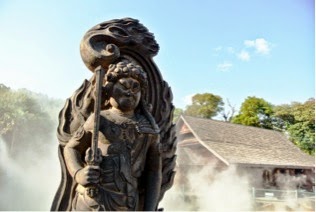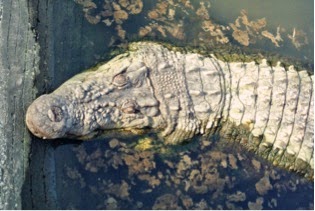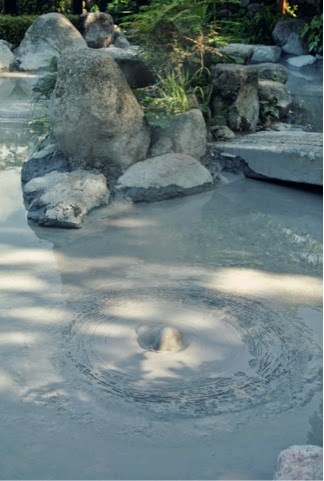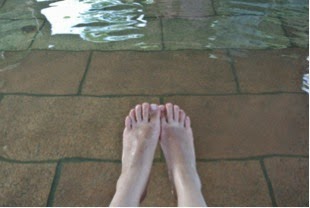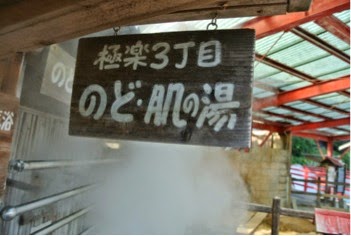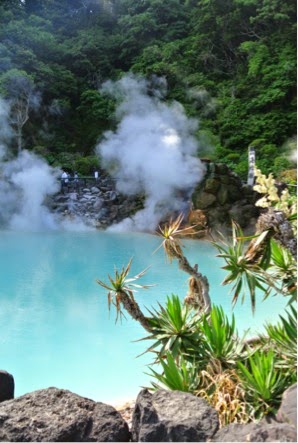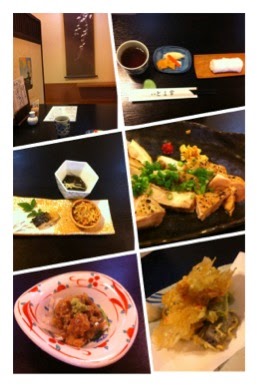Background: Before summer break, my cousin came to stay with me for a week. She’s fluent in Japanese and has been to Japan many many times, so while I was at school, she was out exploring parts of Kyushu that I haven’t had the chance to visit yet. One of them was Beppu, and she very kindly wrote a guest post, complete with pictures. After reading it, I really want to go there!
Enjoy~
About 2-3 hours away from Hakata, Beppu is an onsen paradise famous for its healing and beautifying hot springs and scenic Eight Hells. I’ll be writing about some useful tips that would save you time and money while you’re there, and about what you would expect from some of the attractions!
One of the first things I would recommend upon arrival is to visit the tourist information bureau within the JR Beppu station. Do drop by there to get discount coupon books for a variety of tourist attractions, hot springs, and restaurants, maps, bus routes and timings, and so on and so forth ☺ They have English speaking staff to help out as well! They also sell an all-you-can-ride daily bus ticket, and you get a discount if you can produce student identification. Priced at 600 yen for students, it is definitely worth it if you spend the day there, as a one way bus ride already starts at 200+ yen. Buying an unlimited ride ticket also made me feel more adventurous!
The Eight Hells close rather early at 5pm, so do make sure to get there early! It should take about 3 hours to view all eight at a moderate pace ☺ Do allocate more time if you would like to slowly savor the onsen cuisine as well! As a chronic oversleeper, I only arrived at Beppu at 3pm so I viewed 6 out of 8 Hells. The 6 I viewed were:
Yama Jigoku, Oniishibozu Jigoku, Umi Jigoku, Shiraike Jigoku, Kamado Jigoku, Oniyama Jigoku.
First up, I’ll talk about the Yama Jigoku (“mountain hell”)!
The Yama Jigoku area had brown waters and a small collection of animals including flamingoes and horses, nestled in a hilly area. On the day I went, the steam was impressive (I managed to take the below shot there):
 |
| I couldn’t resist the touristy caption! |
If you like a more extreme view of animals, you would enjoy Oniyama Jigoku (“Demon Mountain” Hell) as well! It was teeming with an assortment of crocodiles! (There is fencing for safety don’t worry~) Striking statues of demons were also present, making for an impressive sight!
Amongst the Hells that I visited, the Oniishibozu Jigoku (“demon rock monks” Hell) had the most curious waters. The bubbling mud with bubbles that resemble the shaved heads of monks are what inspired the name of the Hell. Do look out for the free foot onsen bath in the area, which would make a good pit stop in your journey ☺
One of the Hells that I found most interactive was the Kamado Jigoku (“Cooking Pot” Hell). The area was colorful, with bright red fences and boldly colored demon statues. There, you can taste actual onsen water (it tasted rather metallic due to the high concentration of minerals), and sample onsen cuisine at a scenic resting area. I’ll let the pictures speak for themselves!
 |
| Tried an authentic onsen egg, one of the must-eat foods of Beppu. |
 |
| Yuzu chilli flavored soy sauce. The tanginess really brings out the flavor of the egg! |
Next, the Umi Jigoku (“Sea” Hell). In my opinion, the most scenic Hell that I visited as I really loved the intense colbalt blue waters! In the photos I’ve provided, no touching up was done – the waters really are that blue! Really wish that I could take a dip there!
The scenery of Shiraike Jigoku (“White Pond” Hell) closely rivals that of the Umi Jigoku. With milky white ponds, and a Japanese-style garden with statues nearby, the place exuded an elegant atmosphere.
After the Eight Hells, I dropped by Beppu Onsen Hoyoland.
Entry costs 1,100 yen for adults (100 yen discount for those using the tourist coupon book, which I received from the tourist information centre at JR Beppu Station).
While the facilities are aged, the abundant mud in the onsen is the main attraction – I fell in love with the beautifying effects of the onsen mud! I also overheard a few other ladies in the onsen commenting on the impressive effects of the mud on the skin – seems like everyone else also experienced it! Well I think photos would help my explanation. No filters were used in the photos I took below 😀 I don’t have before-onsen photos, but my skin is usually yellow based and not very pale. After the onsen, well that’s a different story! :p My skin became pink-based and gave off a soft glow, and my skin felt very smooth and moisturized. Could not resist poking at my bouncy skin now and then after the onsen! The effect lasted until around noon of the next day (so effectively one day), but pretty impressive considering it was a once-off soak. No wonder there’s a saying that the onsens of Japan are one of the secrets of Japanese beauty!
 |
| These two photos were taken right after leaving Hoyoland, my skin was amazingly pink and glowy! |
 |
| Even after a few hours, my skin was still very white and translucent looking! #nofilter ahaha |
Some pointers I learnt that would be useful for first-timers:
Towels are not provided within the bathing area, so do bring your own towels, or rent them from the front counter. Note that the outside baths are mixed gender, but with the opaque waters, less revealing than usual mixed baths. The good news is that there is a blocked off area near the entrance whereby those who feel uncomfortable with mixed baths can still enjoy the fresh air and outdoors onsen.
After a good long soak at Hoyoland, I returned to Beppu Station and had dinner nearby at Toyotsune. The ambiance is relaxing and cosy, and the food is fresh and priced affordably (set meals start from below 1000 yen)! Complimentary free-flow houjicha is also provided with your food. The dishes that I particularly enjoyed were the tempura and jidori chicken (“chicken of the earth”). The assorted tempura were all lightly battered and perfectly crunchy without any oily taste. In fact, the signature dish of the restaurant is their tendon (tempura rice bowl), with many excellent reviews! As for jidori chicken, it refers to a type of domestic free-range, hormone-free chicken bred within Japan and is known for its rich flavor and springy meat. The grilled jidori dish was pure bliss – savoury, lean, firm yet tender chicken was paired with a tart ponzu sauce to bring out the fragrance of the chicken.
Next up, Takegawara Hot Spring!
Takegawara Hot Spring is not only affordable (100yen for the normal bath), but also closes later than other public hot springs. It closes at 1030 and is just a 5-10 minute walk away from the station, so I dropped by for a quick soak before my train arrived. The onsen provides free washbowls, but towels, soap, hair dryers, and coin-operated lockers are chargeable. Still, the prices are affordable, with locker rental at 100yen a go and body soap at 50 yen. The woman’s bath is a sodium-hydrogen carbonate base, and is claimed to relieve anything from injuries (bruises, sprains, cuts) to chronic conditions such as stiff joints and hermorrhoids (!). The women’s bath is unembellished and a bit small, but facilities are well maintained. For the price and location, it’s worth it for a quick half an hour – one hour soak!
After the relaxing bath, I definitely felt warmed up and more energized! It was time to return to the train station, and look for a cold drink for a comfortable train ride back 😀
Kyuushuu is known for its trains with beautiful themes and I was lucky to get tickets for the 800 Series Tsubame Train. According to the JR Kyuushuu Railway Company, traditional craftsmanship developed by the people living in thr Kyuushuu area has been incorporated in the Shinkansen’s interior design. For example, the rope curtains in the washrooms have been crafted with igusa rush grown in Yatsushiro. Below are some photos of the classy and romantic interior! I marveled at how even the ordinary carriages had private booths equipped with tables and reading lights!
 |
| Managed to catch the Tsubame 800 again after a quick onsen pit-stop at Beppu on another day! |
All in all, it was a relaxing and scenic day! Would definitely love to go back to visit the Chinoike (“blood hell pond”) Hell, as well as revisit Hoyuland again!
More information (Click on the links):
Toyotsune (restaurant)
Takegawara Onsen

